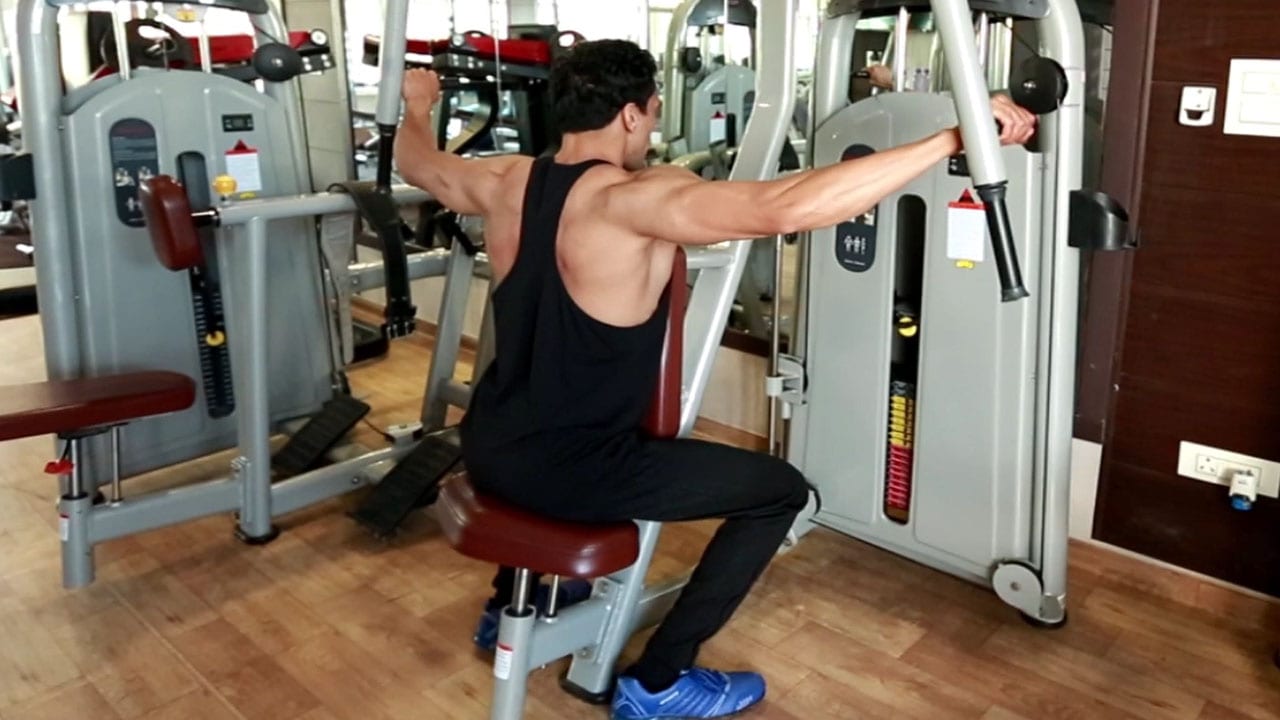The Single Strategy To Use For Rear Delt Fly
Wiki Article
The 5-Minute Rule for Rear Delt Fly
Table of ContentsNot known Facts About Rear Delt FlyTop Guidelines Of Rear Delt FlyThe Only Guide to Rear Delt FlyThe Rear Delt Fly Diaries3 Simple Techniques For Rear Delt Fly
The side-lying back delt fly is a shoulder exercise used to target the rear delts. The side-lying reverse pinhead fly is likewise known as the side-lying dumbbell back delt raising.Keeping your elbow dealt with as well as your body still, exhale as you elevate the pinhead from the flooring till it is virtually vertical. Inhale as you turn around the motion and reduced the pinhead towards the beginning setting, quiting before the pinhead touches the floor.


Draw slowly so that you are in control of the weight at all times. Standing with Resistance Bands This is an activity that can be done on shoulder day, as it targets the rear delts. We like to additionally hit it on a back day as the back delts frequently require to increase the job each week.
Keeping your joints slightly curved, raise both arms out to the sides until the pinheads are level with the height of your shoulders, Hold for a count of two and after that gradually reduced the dumbbells to the starting setting in a regulated fashion. Repeat for the proposed variety of repeatings - rear delt fly.
Squeeze your shoulder blades and stop briefly for a minute at the top of the activity. Do not let the dumbbells "hang" at the bottom of the movement, yet maintain the stress in your arms. 10. Head-supported reverse pinhead fly The head-supported reverse pinhead fly is likewise called the head-supported bent-over dumbbell lateral raising. rear delt fly.
Some Known Questions About Rear Delt Fly.
Keeping your elbow joints slightly bent, increase both arms out to the sides until the pinheads are level with the height of your shoulders, Hold for a matter of two and after that slowly reduced the dumbbells to the beginning placement in a regulated way. Repeat for the desired variety of repetitions.Keep your back straight and also your body still. Keep your body still. Just your arms ought to move. Ideal Alternative of Rear Delt fly 1. Draw Face pull is a cable equipment exercise that mostly as well as to a lesser degree also targets the arms, triceps, and also traps. Make use of a cord pulley maker to pull the weight right toward your forehead.
Hold this placement momentarily as you press your shoulder blades together, getting rear delts and middle catches as tough Going Here as possible. After that slowly return the rope to the start setting and also repeat for reps. Stand straight with feet in a comfy well balanced position. Be certain to exhale when pulling weight toward your face.
Your top arms need to be straight out to your sides with elbow joints curved. 2. Dumbbell Back Delt Row Dumbbell Resting Back Delt Row is a stamina workout that functions your deltoids and side deltoids. Pinhead Lying Rear Delt Row is a fantastic basic step. When done appropriately, it can effectively target your shoulders and top body.
The Best Guide To Rear Delt Fly
Keep a regulated motion and avoid jerky activities. Pause for a minute at the top before gradually reducing the dumbbell back to the starting placement. Takeways Currently that you know a couple of variants for your rear delts fly, strike the gym and also try every one to get the complete result.
The cord back delt fly is perhaps the most effective isolation exercise for your posterior deltoid and also back. You require to be doing them. A powerful back with rear delts that pop is one of one of the most outstanding attributes on a lifter; perhaps one of the most excellent relying on who you ask.
To really get your muscular tissues to pop, you require to start doing the cord back delt fly pointed out over. The cable television back delt fly is a seclusion motion that permits you to really our website refine in on the muscles that need it. To get the most out of what this workout provides, you need to comprehend what it her comment is here in fact does as well as its appropriate kind.
In this article, you're going to discover: What is the wire rear delt fly? What muscular tissues does the cable rear delt fly train. Exactly how to appropriately execute the cable rear delt fly. Benefits of the wire back delt fly. Multiple cable rear delt fly variants. The wire back delt fly is a seclusion movement that trains the posterior muscle mass.
What Does Rear Delt Fly Mean?
The joint at which the cable television rear delt fly activity takes place is the shoulder. Have you seen a cord chest fly?Left arem orders the appropriate take care of and also vice-versa while the sheave are evaluated concerning head level. While maintaining a small bend in the elbow joint, the trainee will draw the arm back as if they're preparing yourself to offer someone (I wish they know them) a substantial hug. A lot more comprehensive guidelines will be offered below, yet this is to give you a basic concept of the activity.
Here are the muscle mass used throughout the cable television rear delt fly. As the name of the workout implies, the rear deltoid is a considerable mover in this workout. The shoulder muscle (deltoids) is composed of 3 heads. These heads are needed as the shoulder joint is what's called a "ball-and-socket" joint.
One of the major movements it's responsible for is shoulder horizontal abduction, as seen during the back fly.
Report this wiki page